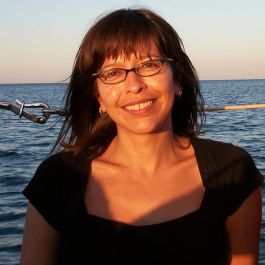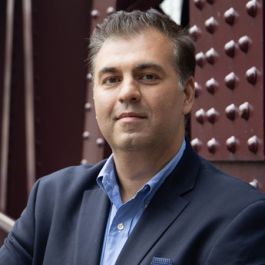Transformation is in the air at Productive Edge.
The Chicago-based digital consulting company aims to propel its clients into the modern digital age. Sometimes that looks like team members developing machine learning tools to help pharmacies automate prescription reviews. Sometimes it means engineers launching new cloud infrastructure to help a regional health insurance payer create its virtual primary care practice. Sometimes it means building customizable “white label” apps to more seamlessly integrate a health and wellness organization’s programs within clients’ established brands.
Any way you cut it, the Productive Edge team sees reinvention as a constant — as well as a core value.
That’s currently the case on more fronts than at any other point in the fast-growing company’s 14-year history. Broadly, an on-going shift in its growth strategy will see the company focus even further on effecting progress across the interconnected health, wellness and insurance sectors. Internally, employees are embracing change in other forms. For example, the built-in flexibility of the company’s hybrid workplace has kept Productive Edge ahead of competitors while allowing it to thrive as a globally-distributed business.
For Diana Maldonado, who serves as a project manager, product owner and business analyst, all these areas of growth speak most to Productive Edge’s commitment to constant improvement and visionary thinking.
“As technology evolves, as society evolves, and especially as healthcare evolves, we’re pushing ourselves to be at the forefront of all of those changes,” she said, “not only in how we work with clients, but in how we work internally.”

PLAYING A PART YOU FEEL PASSIONATE ABOUT
Diversity, equity and inclusion (DEI) initiatives are steadily pushing the organization forward from within. According to Zoe Jacobs, a senior UX content strategist who leads Productive Edge’s all-volunteer DEI committee, a turning point last year involved the hiring of social impact firm Ethos Equity. The firm was the first to conduct a DEI-focused audit that assessed Productive Edge’s current approach, then built out a more inclusive strategy for its future.
“Ethos evaluated our entire company, how we work and the policies we have in place,” she said. “Through that, they came up with strategic recommendations that we’ve been chipping away at, which has helped us make real progress and focus on how we’re structuring DEI internally.”
Thus far, the company has taken those recommendations in stride. Productive Edge now observes Juneteenth and Martin Luther King Jr. Day, circulating educational resources around both. As of last year, all employees received two additional days of paid time off for giving back to their communities, an initiative that the DEI committee partnered with PE Cares to bring about.
“Our two groups are working together, with the same mindset and toward the same goals,” she said. This collaboration has allowed employees to participate in a TechGirlz workshop teaching young women how to code –– and also led the company to more recently approve a charity donation match.
Retiwalla wouldn’t consider running the business any other way, he said. Whether they’re focused on DEI or product management, various special interest groups have long been an essential element of the company’s approach to inclusion and opportunity. “Having an outside consultancy come in was us acknowledging that we know we can evolve, improve and find ways of communicating more effectively what DEI means to us,” he said. Not only allowing but empowering employees to lead the charge on such initiatives aligns with Productive Edge’s overall approach to career growth, as well.
“People are encouraged to take on responsibilities,” Retiwalla said. “Our executive leadership team has always looked at that as enablement, so that people can step up and play a part they feel passionate about. If you want to do so, that’s not something you have to fight for at PE.”
Shifting to a hybrid environment, in which employees visit the office only as much as they want to, Jacobs was relieved that employees were able to preserve the strong internal culture and commitment to progress. “When we were in the before times, we were together all the time, and the energy was palpable,” she said. “But with the full flexibility of our new structure, we’ve done a great job of infusing that same feeling remotely.”

WORKING TOGETHER, FROM WHEREVER
Maldonado works entirely out of her Chicago home office, where she can more effectively balance the responsibilities of serving jointly as a project manager, product owner and business analyst — “or whatever else it takes to keep the team successful,” she said.
For years prior to the pandemic, Maldonado had thrived in remote roles. “Remote work helps me to control the environment in which I’m working,” she said. “For many years, as well, I’ve been taking care of my mother. Having the flexibility to bring her to appointments and manage her healthcare has been life-saving.”
Despite her physical distance from Productive Edge’s headquarters, Maldonado never feels left out of the loop. Team meetings, one-on-ones, lunch-and-learns and even happy hours take place virtually, and coworkers are in constant communication over Slack. “Realizing not all of us are going to be in the same room, we understand what we’re expecting from one another,” she said. “We support each other as a team, regardless of where we are individually.”
Rather than selectively providing virtually accessible options for company scrums and events, Productive Edge consistently accommodates remote employees. According to Retiwalla, this is a foundational strength. “The idea of remote-first teams was baked into our original working model when the company was first established,” he said. “Many companies may think of their teams outside of the United States as offshore teams, managed by offshore managers, plugged into projects as needed. That’s not how it works at PE.”
Instead, every manager has direct reports, whether or not those reports live nearby; even the most tight-knit teams might feature six employees from five different time zones. Remaining technologically agile has proved advantageous while building products and services for globally distributed clients from different industries; it’s also expanded the company’s talent pool, while offering the kind of full flexibility that’s currently top of mind for the highly-skilled candidates Productive Edge seeks to attract. “As the world adapts to a remote-first mentality, it has always been ingrained in the way we think about work,” Retiwalla said.
“It’s not for everyone,” added Maldonado. “But for those who do well working at home, it’s an incredible benefit for mental and physical health to have that flexibility. Knowing your company actually supports that is very important.”
It’s refreshing, added Maldonado, to know Productive Edge sees progress as holistic and won’t neglect employee experience as it augments the industries it serves.
As Productive Edge forges ahead, prioritizing innovation at every turn, Jacobs and Maldonado express particular excitement about their sense that PE 3.0 — and the greater emphasis it will place on healthcare — aligns as well with their personal values.
PE 3.0
As Productive Edge expands, the sky’s the limit for which clients the company can support, Chief Strategy Officer Raheel Retiwalla said. Ultimately, he believes that all roads lead to healthcare, which is where a strategy called “PE 3.0” comes into play. Retiwalla’s growth strategy involves adding more software solutions to the company’s digital business consulting and engineering services and introducing healthcare-specific go-to-markets.
“We understand the healthcare industry’s challenges deeply, both on the business and the technology side, and we are a company that has aligned our people and our offerings to solve that industry’s most pressing problems,” he said.
The internal program that he recently kicked off to support this effort brings subject matter experts across teams together to identify specific areas of opportunity.
“Healthcare is something that, as humans, we all experience,” Jacobs said. “We have a vested interest in improving people’s lives every way we can. Making these systems better for people working in healthcare, and improving the patient experience, is what I’m most excited about.”







